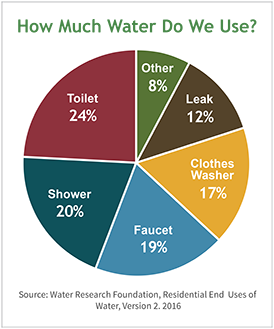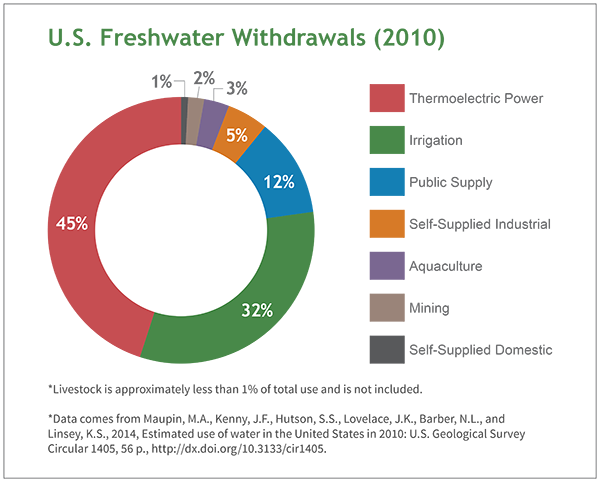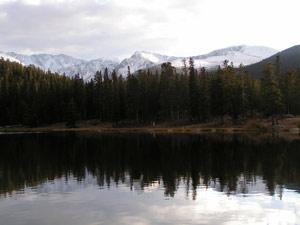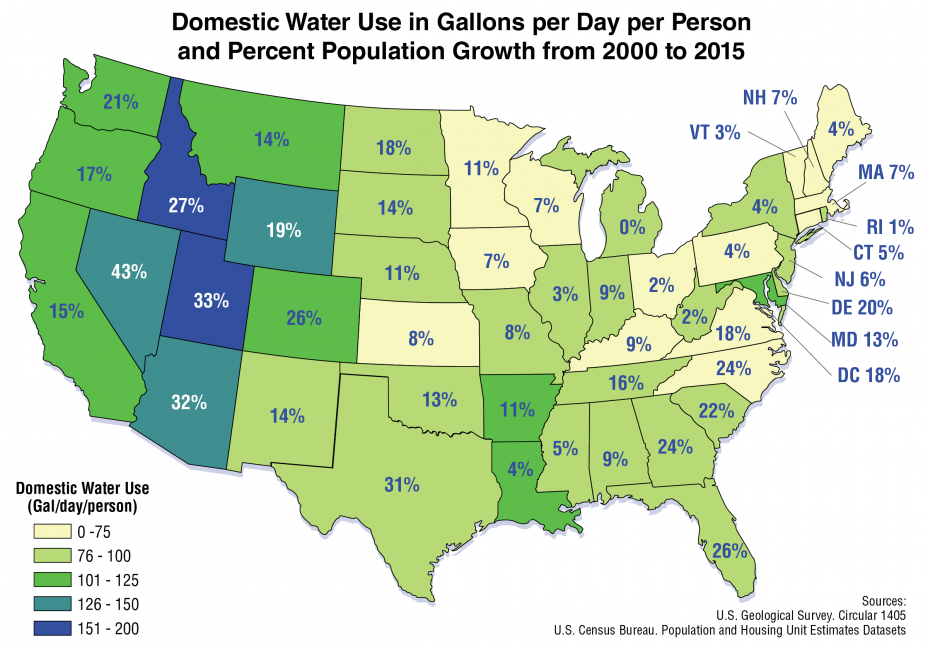How We Use Water
 The Earth might seem like it has abundant water, but in fact less than 1 percent is available for human use. The rest is either salt water found in oceans, fresh water frozen in the polar ice caps, or too inaccessible for practical usage. While population and demand on freshwater resources are increasing, supply will always remain constant. And although it's true that the water cycle continuously returns water to Earth, it is not always returned to the same place, or in the same quantity and quality.
The Earth might seem like it has abundant water, but in fact less than 1 percent is available for human use. The rest is either salt water found in oceans, fresh water frozen in the polar ice caps, or too inaccessible for practical usage. While population and demand on freshwater resources are increasing, supply will always remain constant. And although it's true that the water cycle continuously returns water to Earth, it is not always returned to the same place, or in the same quantity and quality.
On this page:
- The Water Around Us
- Water in Daily Life
- Understanding your Own Water Use
- Commercial, Industrial, Agricultural & Electricity Water Use
- Communities Face Challenges to Meet Demand
- Droughts Create Stress
- Less Water Affects the Environment
The Water Around Us
Water plays a big role in supporting our communities. Without water there would be no local business or industry. Fire-fighting, municipal parks, and public swimming pools all need lots of water. An array of pipes, canals, and pumping stations managed by our public water systems are needed to bring a reliable supply of water to our taps each day.
Where does all this water come from? It starts out as rain or snow and flows into our local lakes, rivers, and streams or into underground aquifers. You can learn more about water in your state, including how it is being protected and where your local drinking water comes from.
Water in Daily Life
 In the US, we are lucky to have easy access to some of the safest treated water in the world—just by turning on the tap. We wake up in the morning, take a shower, brush our teeth, grab a cup of coffee, and head out for the day. Water is an important part of our daily lives and we use it for a wide variety of purposes, but do we really understand how much we use?
In the US, we are lucky to have easy access to some of the safest treated water in the world—just by turning on the tap. We wake up in the morning, take a shower, brush our teeth, grab a cup of coffee, and head out for the day. Water is an important part of our daily lives and we use it for a wide variety of purposes, but do we really understand how much we use?
- The average American family uses more than 300 gallons of water per day at home. Roughly 70 percent of this use occurs indoors.
- Nationally, outdoor water use accounts for 30 percent of household use yet can be much higher in drier parts of the country and in more water-intensive landscapes. For example, the arid West has some of the highest per capita residential water use because of landscape irrigation.
Understanding Your Own Water Use
An easy to way to understand individual water use is to look at your water bill—not just the amount due, but how much water you used. Once you understand how much you use, the WaterSense calculator can help determine how much water your household could save if you switched to more efficient, WaterSense labeled products.
Commercial, Industrial, Agricultural & Electricity Water Use
It’s easy to forget that we also use water in ways we don't see every day. Water is used to grow our food, manufacture our favorite goods, and keep our businesses running smoothly. We also use a significant amount of water to meet the nation's energy needs. Learn more about what WaterSense is doing to help reduce commercial and institutional water use.

Communities Face Challenges to Meet Demand
Managing water is a growing concern in the US. Communities across the country are starting to face challenges regarding water supply and a need to update aging water treatment and delivery systems, sometimes referred to as "water infrastructure.” Many of the states that have projected population growth increases also have higher per capita water use and can expect increased competition for water resources. Forty states told the Government Accountability Office in a 2014 report Exit that they expected to have water shortages over the next ten years that were not related to drought.
Strains on water supplies and our aging water treatment systems can lead to a variety of consequences for communities, such as:
- Higher water prices to ensure continued access to a reliable and safe supply
- Increased summer watering restrictions to manage shortages
- Seasonal loss of recreational areas like lakes and rivers when the human demand for water conflicts with environmental needs
- Expensive water treatment projects to transport and store freshwater when local demand overcomes available capacity
Droughts Create Stress
Droughts happen somewhere in the country every year and climate change has the potential to increase stress on water resources. To create a more sustainable water future, cities and states are coming together to encourage water conservation and efficiency as a way to reduce demand.
Less Water Affects the Environment
 When reservoir water levels get lower and ground water tables drop, water supplies, human health, and the environment are put at serious risk. For example, lower water levels can contribute to higher concentrations of natural and human pollutants.
When reservoir water levels get lower and ground water tables drop, water supplies, human health, and the environment are put at serious risk. For example, lower water levels can contribute to higher concentrations of natural and human pollutants.
Less water going down the drain means more water available in the lakes, rivers and streams that we use for recreation and wildlife uses to survive. Using water more efficiently helps maintain supplies at safe levels, protecting human health and the environment.
Water suppliers are doing their part to help their customers save water with programs like WaterSense and are also working to improve water efficiency for their own operations.

